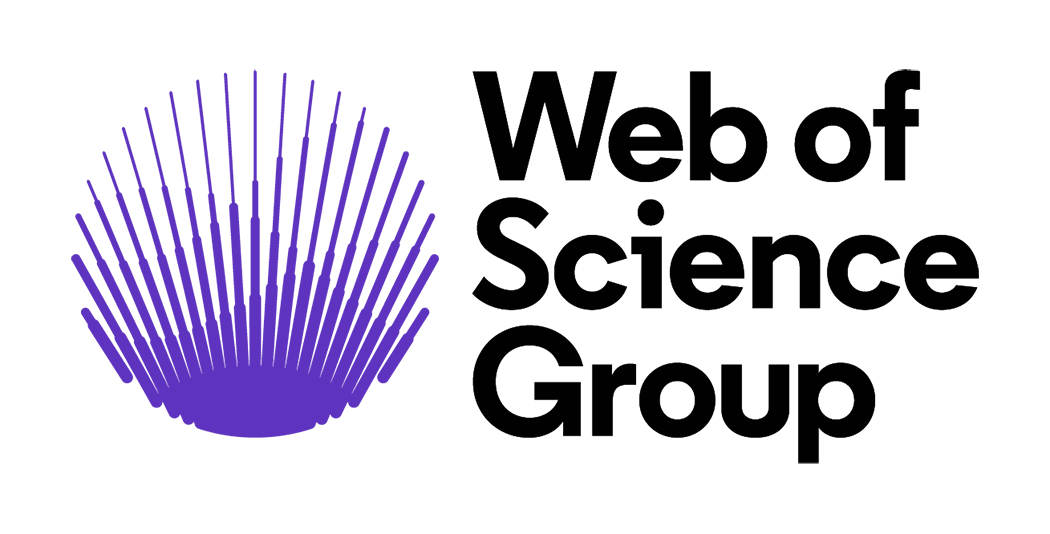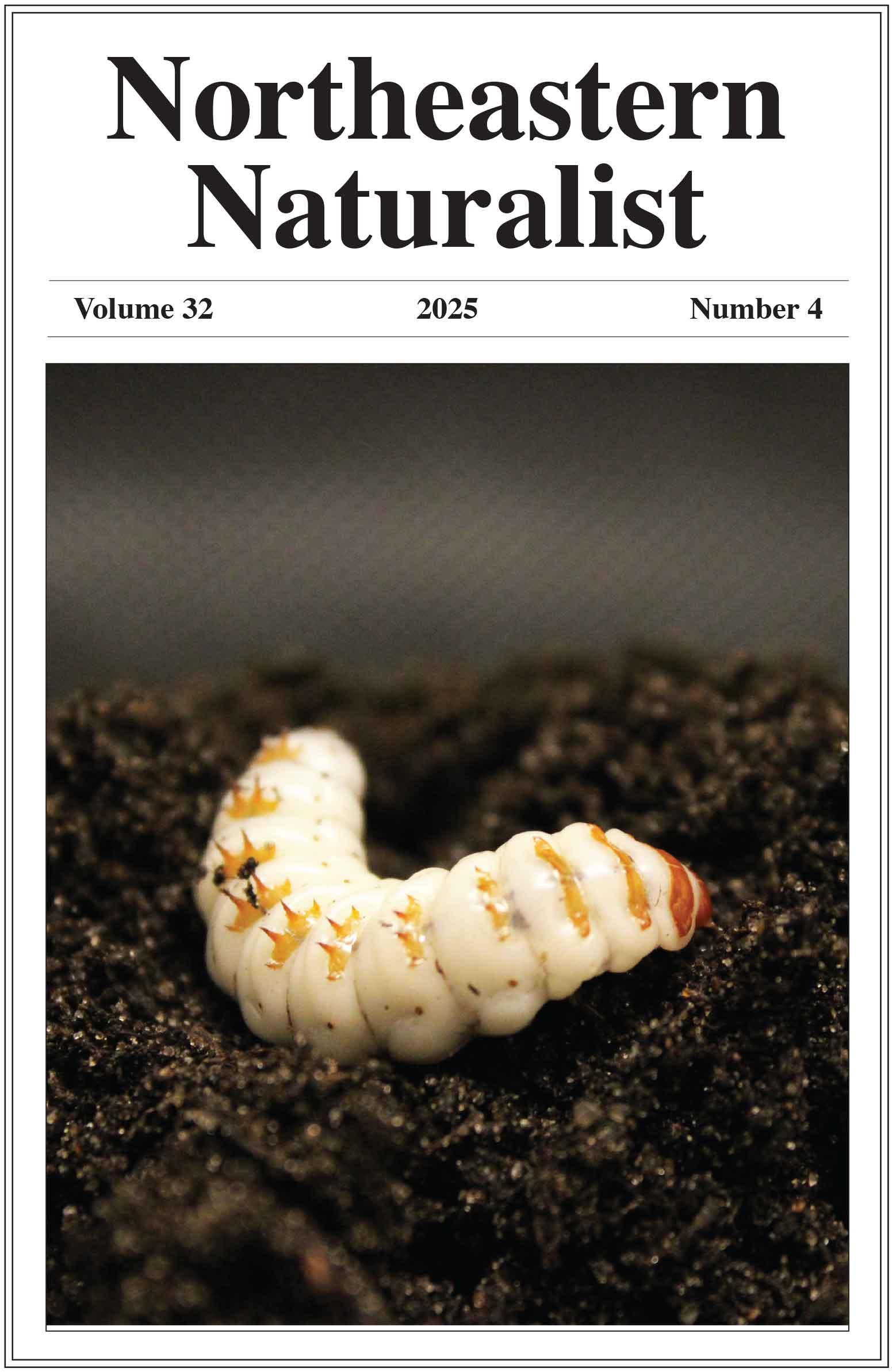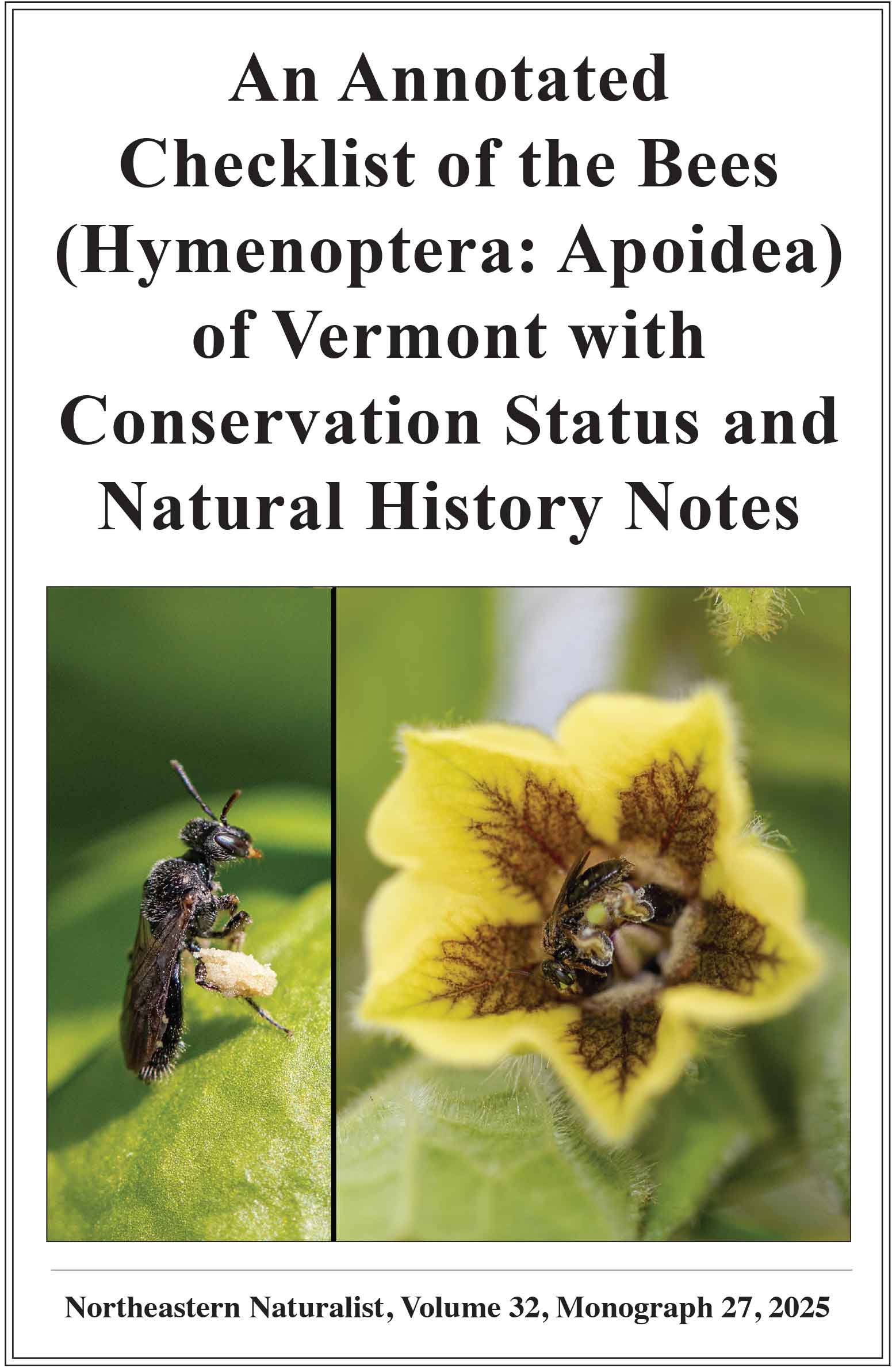Survival and Age at Maturity in Head-started Wood Turtles (Glyptemys insculpta) with Implications for Population Recovery
Kurt A. Buhlmann1,*, Colin P. Osborn2,3, James R. Angley3, Brian A. Bastarache4, Kourtnie A. Boulel4, Ryan J. Rimple1,2, Amelia L. Russell1,2, and Tracey D. Tuberville1
1Savannah River Ecology Laboratory, University of Georgia, Aiken, SC 29802. 2US Fish and Wildlife Service, Basking Ridge, NJ 07920. 3Michigan Nature Association, Okemos, MI 48864. 4Bristol County Agricultural High School, Dighton, MA 02715. *Corresponding author.
Northeastern Naturalist, Volume 31, Special Issue 12: G138–G155
First published early online: 28 September 2024
Abstract
A small relict population of Glyptemys insculpta (Wood Turtle) was discovered on a protected area in New Jersey in 2006. Marking and radio-tracking of the old founder individuals helped to determine movement patterns and habitat use. Monitoring of nesting females revealed that nesting habitat and nest success was limited due to invasive plants, human landscape alteration, and Procyon lotor (Raccoon) depredation. We initiated habitat restoration including creation of protected nesting areas, mowing in winter, invasive plant removal, and adjacent landowner education. We direct-released hatchlings from protected nests from 2006 to 2015, yet only a few were detected in subsequent years. Between 2011 and 2023, some or all of each hatchling cohort were head-started indoors at a high school for 9 months. We have continuously radio-tracked all head-starts from the 2011 cohort and portions of the 2012–2014 cohorts. Head-started turtles found their own food, established home ranges, and hibernated communally with founder adults. Subsidized Raccoons, mowers, automobiles, and flooding events—all human-instigated—were the causes of mortality. The first males and first females from the 2011 head-start cohort reached maturity in 2017 and 2019, respectively, at ages 6–8, younger than expected by 4–5 years. Successful reproduction by head-starts was confirmed by viable hatchlings produced in 2019, 2020, and 2023. Head-starting can pull a relict population out of the nose-dive to extirpation when used in conjunction with habitat-restoration practices, but it must be conducted with persistence and continuity over at least the number of years it takes for the earliest cohorts to reach maturity and begin producing offspring of their own.
![]() Download Full-text pdf (Accessible only to subscribers. To subscribe click here.)
Download Full-text pdf (Accessible only to subscribers. To subscribe click here.)
Access Journal Content
Open access browsing of table of contents and abstract pages. Full text pdfs available for download for subscribers.
Issue-in-Progress: Vol. 33(1) ... early view
Check out NENA's latest monograph and Special Issue:













 The Northeastern Naturalist is a peer-reviewed journal that covers all aspects of natural history within northeastern North America. We welcome research articles, summary review papers, and observational notes.
The Northeastern Naturalist is a peer-reviewed journal that covers all aspects of natural history within northeastern North America. We welcome research articles, summary review papers, and observational notes.